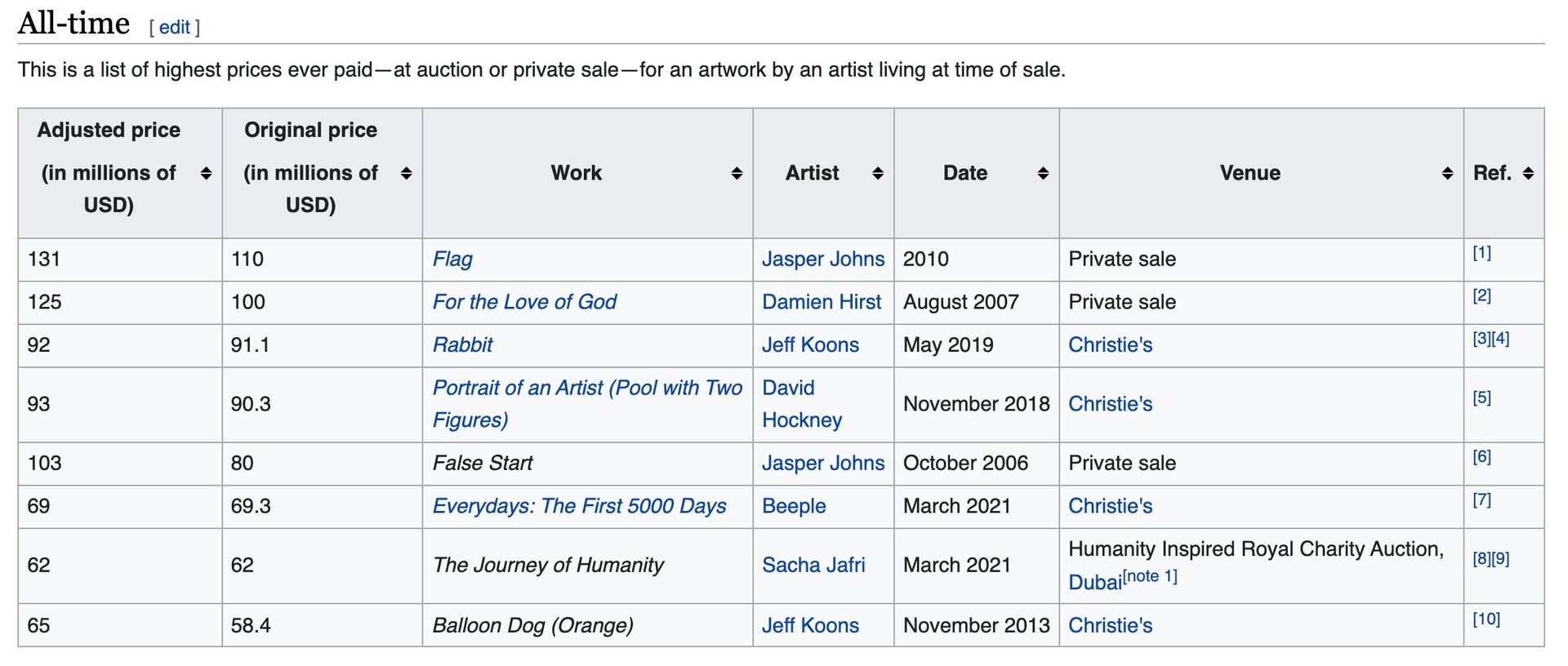Are NFTs art? Wikipedia says not exactly
For the nth time, what is an NFT again?


For the nth time, what is an NFT again?
Despite numerous explainers, Clubhouse chat rooms, and an addition to the dictionary, the concept of a non-fungible token remains elusive for many. And now Wikipedia is involved.
In a close vote held on Jan. 12, editors of the online encyclopedia decided to separate artworks sold through cryptoart auction sites from those sold by established auction houses or in private sales. An editor who goes by the handle “jonas” outlined the conundrum: “Wikipedia really can’t be in the business of deciding what counts as art or not, which is why putting NFTs, art or not, in their own list makes things a lot simpler,” he argued on a discussion page about the vote. “Theres a separate issue of artificial price inflation of NFTs, though that’s something that would need to be decided in the NFT list and not here.”
Several editors voted against creating a chasm in the art canon. “If we agree Beeple and Pak are artists, why would their sales not count on this list?” wrote an editor who identifies as Pmmccurdy. “I don’t understand the logic here.”
“An art emergency”
Despite some NFTs’ eye-popping sales numbers, many art critics haven’t been kind to digital creators, decrying NFT drops as publicity stunts, money-laundering schemes, or just plain inferior. Wikipedia’s vote plays into a larger debate over whether cryptoart should be classified as art.
As a result, the decision sent cryptoart defenders into a tailspin. Duncan Cock Foster, who co-founded NFT art sales platform Nifty Gateway, dubbed the debacle an “art emergency.” In a flurry of tweets, Foster described how consequential the Wikipedia edit is to the future of cryptoart. “If NFTs are classified as ‘not art’ on this page, then they will be classified as ‘not art’ on the rest of Wikipedia,” he wrote. “Wikipedia is the global source of truth for many around the world. The stakes couldn’t be higher!”
A study of Wikipedia’s entry for “List of most expensive artworks by living artists” makes clear that the distinction is not about the art per se, but how it was sold. Beeple’s NFT titled Everydays: The First 5,000 Days, which sold at Christie’s for $69 million last year, is on the list, along with works by top-selling contemporary artists Jasper Johns, Damien Hirst, and Jeff Koons.
List of most expensive artworks by living artists

Most expensive NFTs
The wider explosion in NFT sales is not happening at traditional auction houses, but on platforms like Nifty Gateway, Open Sea, and Axie, where even sales with eye-popping price tags will be limited to a separate page on Wikipedia. The most expensive NFT so far, a work by digital artist Murat Pak titled The Merge, sold on Nifty Gateway for $91.8 million. But one recent study of auction results revealed that the majority of NFT art sold for $200 or less.

A previous version of this article attributed the statements from Wikipedia editor Pmmccurdy to Siliconred.